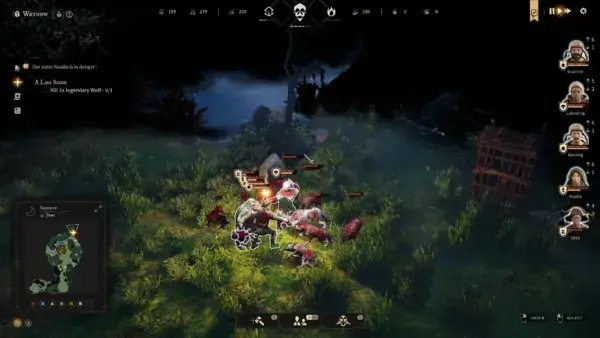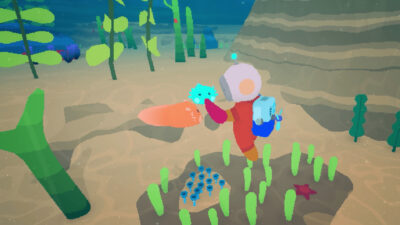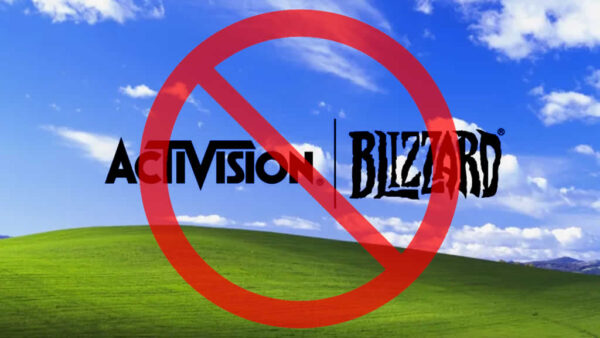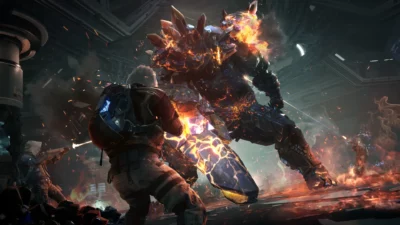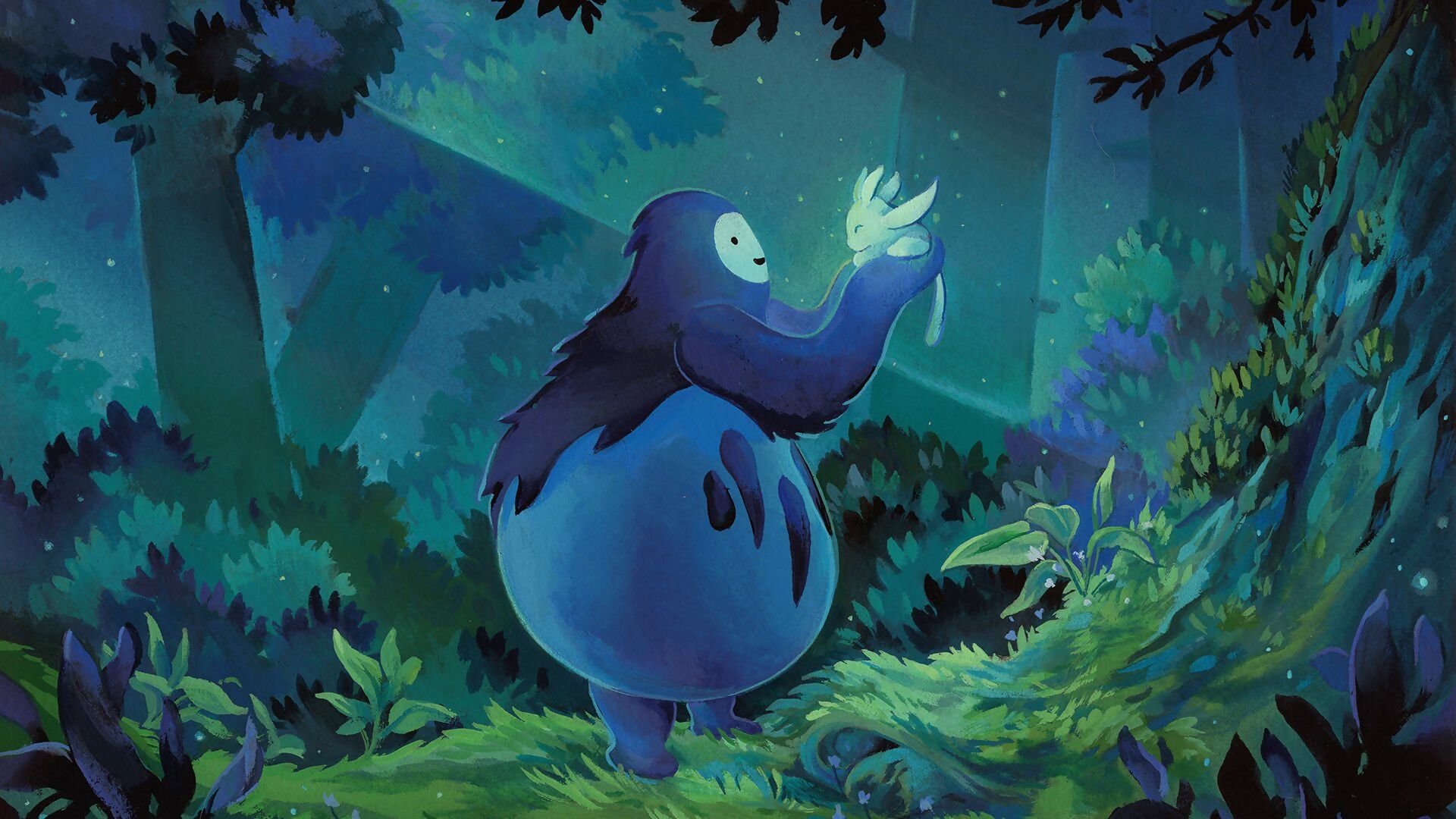
Anticipation is a funny thing. It can create excitement and buzz, which can in turn enhance the final product. Alternatively, it can generate a level of expectation that simply can’t be delivered. For fans of the Ori franchise, the prospect of a new chapter was a hugely exciting prospect. For its creators, however, fans’ lofty expectations came with pressures all of their own.
Released in 2015, Moon Studios’ 2D platform adventure, Ori and the Blind Forest, quickly went on to become one of Microsoft’s most revered new IPs, setting a new genre benchmark and raising the bar for the wealth of 2D action-adventure titles that followed in its wake.
Scored by British composer Gareth Coker, Ori’s soundtrack was a lush, beautiful, sweeping orchestral affair, widely praised for its uplifting tone. Critics and fans alike warmly embraced Coker’s work, and when its sequel, Ori and The Will of The Wisps, was announced in 2017, he soon found that he had a lot of expectations to live up to.
“Just seeing in the comments: ‘The soundtrack will be good,’ Coker laughs. “It’s great to have that vote of confidence, but you don’t actually know that because it doesn’t exist yet.”
As it turned out, he had little to worry about. On the game’s release in March 2020, Coker’s work was lauded for building on the series’ buoyant sound with its exploration of darker tones and themes while still remaining true to the spirit of the first game.
But while the views of fans were important to the game’s director, Thomas Mahler, and Moon’s wider creative team, they didn’t allow those views to colour the creative process.
“Thomas, in particular, is unbelievably hard-nosed and single-minded, which is a good thing to have in a director,” Coker notes. “He knew the game that he wanted to make from the outset. When you have those core pillars in place, it then gives you room to add some stuff in between, but you’ve got to know what game you’re making and not have that core idea be influenced by anything else.”
When it came to a game as beloved as Ori and the Blind Forest, however, Coker was all too well aware that he was never going to please everyone the second time around.
“For a soundtrack that is so loved, there are going to be people who cannot move on from what that soundtrack is – and that’s totally fine,” he concedes. “I became quite comfortable with that quite early on. I’m going to do what I think is best for the story of this game, and nothing else matters.”
 2019.jpg” alt=”” width=”1920″ height=”1080″ />
2019.jpg” alt=”” width=”1920″ height=”1080″ />After nearly two years of writing, recording began at AIR Studios in London in late 2019, finishing with cutscene sessions in January 2020.
Breaking new ground
A five-year gap between games effectively saw the team at Moon dissecting the mechanics of Ori and the Blind Forest and rebuilding them from the ground up.
Changes were made to improve all aspects of the game, ranging from combat, right through to visuals and the story itself. Meanwhile, Coker set about building on the framework of Ori and the Blind Forest’s score to reflect the new world that Ori would inhabit.
“The tone of the game is slightly heavier and slightly darker,” he says. “It’s not just Ori that’s grown up. The studio has grown up and, honestly, as a composer, I’ve grown up, too.”
Back to the start
Coker’s involvement with the Ori franchise began in 2011 when he scored an initial prototype for the then-fledgling Moon Studios, before Microsoft Studios snapped up the project in 2012.
“I did the prototype for free,” he recalls. “The director said that if I did a good job for them and their pitch was successful, I could do the music for the game. And it was pretty awesome that they held that promise, because it’s been a good relationship.”
Coker began work on Ori and the Blind Forest in earnest in 2013, with recording sessions taking place in October 2014. Moon afforded him a great deal of freedom in developing initial sketches for the game’s score, and aside from providing steer around the game’s content and narrative, he was largely left to his own devices with regards to crafting a score.

The introduction of villainous spider Mora marks the series’ first exploration of overt horror themes.
“The thing about Moon is they’re iterative when they need to be, but if something works the first time, basically no news is good news,” he explains. “They gave me pretty much carte blanche right from the very beginning of this project to just build whatever the musical DNA is from the ground up, and that’s not something that’s very common.”
Working with references to the likes of film composers James Horner, Thomas Newman, and James Newton Howard, the game’s directors otherwise set Coker free to explore sounds that he felt best suited the material.
“It gave me an idea of the rough kind of sound – especially with the Horner reference,” he says. “They were very emphatic from the beginning that they wanted melodic content and for the first game, we did that. The second game features more themes, and we were able to use the themes from the original game as well, so that’s always been cool.”
The wood through the trees
Work on Will of the Wisps began for Coker at the end of 2017, working to a projected release date of 2019, which later shifted to March 2020. That year-long delay sparked a great deal of discussion online, which Coker and the rest of the team at Moon weren’t oblivious to.
“I always chuckle when I see fans online saying, ‘Oh, it’s a 2D platformer. It’s a simple game. Why does it need another year?’” Coker laughs. “With a Metroidvania, I feel like your goal is to build the most stable house of cards possible… Everything has a domino effect. Each department is so heavily dependent on the other for the [game’s] overall flow.”
That process starts out with the game being constructed as grey boxes, which contain no artwork, sound design, or additional detail – a playable blank canvas on which the rest of the creative team would develop their work.
 2019.jpg” alt=”” width=”1920″ height=”1080″ />
2019.jpg” alt=”” width=”1920″ height=”1080″ />Coker’s previous scoring credits include the likes of ARK: Survival Evolved and the Minecraft series.
“They try to make those levels fun to play, and they are incredibly fun to play,” Coker explains. “But of course, when you put artwork in, all of a sudden you’re overwhelmed because there’s too much for your brain to process. You’re like, ‘Look at all of this amazing art’, but then there are 20 enemies to fight and a whole bunch of platforming to do.”
During this process, all departments were invited to feedback on the project as a whole, providing notes on one another’s work. It was during this phase that Coker and the rest of the team were able to critique the design elements that would ultimately give the rest of the creative aspects of the game room to breathe.
“One of the things that Moon is really good at is getting everyone playtesting as often as possible. The whole team playtests every major milestone, and that’s the point where, if you’re going to give feedback on any other department, everything is on the table,” he explains.
“I don’t think they’ll kill me for saying this – the first draft of the game was pretty intense and I’m like, ‘Where’s the open space? Where’s the chance to take the art in?’ What we have now is a game that flows amazingly well because you have the pockets of platforming interspersed with the enemies, but there’s never too much to do. There’s just enough to keep you going.”

The game’s lush new environments and characters offered Coker the chance to build on the emotive groundwork laid by the first game.
New tricks
As the game itself approached completion in late 2019, Coker began the recording process with two sessions at London’s AIR Studios taking place in December 2019 and January 2020, respectively. These sessions saw Coker working with a much larger team of musicians than he had previously, which correlated with the game’s own increase in scope and scale.
“The orchestra is bigger because a lot of the themes of the game have more weight,” he says. “We have a real choir this time, which we didn’t have on the first game.
“There’s something about multiple voices that just has a natural weight and gravitas to it that a solo voice doesn’t quite have. There’s a lot more solo voice on the first soundtrack, and I feel that represents a little more of the charm, naivety, and innocence of Ori. This is a much darker world in general.”
Will of the Wisps’ new environments also saw Coker developing themes for a cast of newcomers. While the likes of Ori’s companion, Ku, and his own themes afford the score moments of levity and a familiar sound for returning players, the introduction of more sinister characters like Shriek, the game’s main villain, and Mora the spider, encouraged Coker to explore darker themes and palettes. Perhaps most excitingly, the latter gave him the chance to delve into uncharted musical territory for the series.
“We’d never really done the dark horror element in Ori before, so I think most musicians, especially composers, can tell that I’m having fun while making that track,” Coker laughs.
“I wanted to make a super-tense and eerie track, but not in the typical atonal dissonant horror way that a lot of spider music tends to be done – you’ve still got the Ori-esque piano, but then there’s a bunch of what I like to call ‘tonal dissonance’.”

Coker was responsible for editing the score into a standalone soundtrack album, which he later cut down further for its 80-minute-long vinyl release.
Coker presents Mora’s theme in several different variations throughout her in-game appearances, starting out as a more subtle melody, before building to a more aggressive theme used for the inevitable boss battle against her, which then resolves to a lighter variant of the theme.
It’s an approach replicated for each character throughout the game’s score, and the various thematic variations would go on to inform the process Coker undertook when consolidating his score into a cohesive soundtrack.
The end result: a sprawling 60-track album that works as both a standalone listening experience and something closely reflective of the journey the player undertakes in the game itself – something that often isn’t possible with game soundtracks.
“With a game like this, where music is pretty central to the player’s experience… these are all core environment cues, core boss fight cues, or core cutscenes that everyone will hear,” he explains.
“When players listen to the music after they’ve finished the game, they’re going to want to experience the environment track exactly as they heard it. Woe betide you if you tweaked or edited a track.”
When it comes to cutting these tracks into standalone experiences, Coker regularly turns to a surprising reference – the pop song format. “This is something that I’ve been doing for years,” he says. “Generally, you’ll hear a verse, chorus, verse, chorus, bridge, chorus format… I think that makes the tracks listenable, which is another reason I don’t cut”.
Clocking in at just over three hours in length, the game’s full soundtrack is a testament to the years of work that Coker has put into the production. “I wouldn’t do this for every project,” he laughs.
“Some require curation more than others, but for this, I thought, ‘Well, you know what? Let’s put it out there and see if anyone complains’. And no one has… or they’re just being very polite.”


